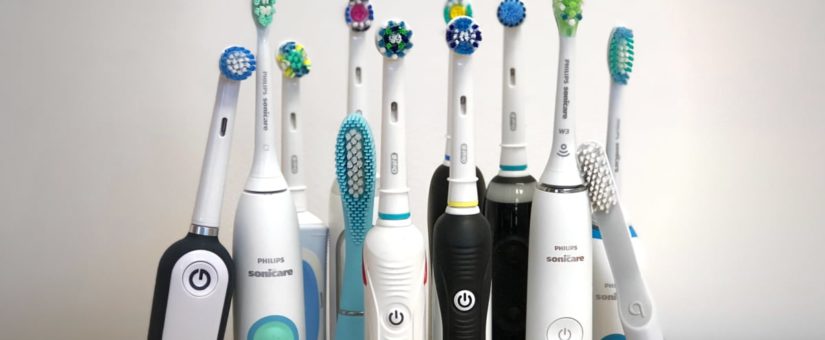
Tips for Optimal Oral Hygiene
This article has not been written with the intention of cancelling the periodic check-ups at the dentist.
Most people know it, a dentist’s appointment to have a hole filled. Some of you thinks it’s okay, other one’s are shivering in the chair. Unfortunately not everyone is blessed with good teeth, but few have really bad teeth. What’s the best way to make sure you get as few cavities as possible? We figured it out for you.
Many people are so afraid of the dentist because there is always something wrong with their teeth. That’s why, first of all, the periodic check-ups at the dentist are so important. The dentist can determine at an early stage whether there is a (starting) hole in your teeth. But not everyone has the money to go to the dentist regularly, but that doesn’t necessarily mean that you always have cavities! Did you already know that you can fight a lot of cavities by keeping your oral hygiene in order preventively?
The Creation of Cavities
Tooth plaque builds up on a daily basis and this (along with a number of other causes) causes cavities, which is also why your teeth like to be brushed. You can also get cavities because of the frequency you eat and drink. Try to limit this to 5 to 6 moments a day and drink as much water as possible outside these moments. You can drink soft drinks or sweets, but try to add this to the usual eating and drinking moments. Your saliva needs the time to stabilize the pH-value in your mouth. Every eating moment is an acid rub on your teeth. Flossing and picking your teeth is also important, because with only the toothbrush you cannot get rid of the plaque between the teeth
The teeth are made up of 3 layers: the outer layer is called enamel. This is the hardest material in your body, so you can imagine that it takes a lot of effort to get cavities. If a hole is still in the enamel (phase 1), the enamel can still remineralise, so it does not need to be repaired. In that case you have to be very consistent with the prevention around cavities.
Then we get the layer under the enamel, which we call dentin. This is a lot softer. If a hole is made in the dentin (phase 2) If a hole is made in the dentin (phase 2) it has to be repared. If you wait with it, it gets from bad to worse and can irritate (phase 3). After this, it continues to the tooth nerve, also called the ‘living’ part of the tooth or molar. Often when a hole is so far that it reaches the nerve, you get a lot of toothache (phase 4) and you have a chance that the tooth has to undergo a root canal treatment, or worse, that the tooth has to be removed.

Flossing, Tooth Picking and Interdental Brushing
We also call these aids ‘interdental cleansing’. We all forget this sometimes. To remember, it’s best to put your toothpicks, floss wire or brushes where you often are (in the car, on the couch in front of the TV, at the dining table) and choose a time that suits you best. It doesn’t really matter which moment of the day you do it, as long as you do it!
To make it as easy as possible for you, several companies have also released flossers. This will save you a lot of hassle with a loose flosser
Choosing a Suitable Toothbrush
A good toothbrush and the frequency of brushing (2 times a day at least 2 minutes) is already more than half the work. Do you brush with a manual toothbrush? Unfortunately, this is not enough for optimal oral hygiene. You could alternate between brushing with a manual toothbrush in the morning and an electric toothbrush in the evening.
If you want to make the switch to an electric toothbrush, it’s very important to consider your needs as you brush your teeth. If you enjoy doing as little work as possible yourself, it’s a good idea to choose for a round toothbrush . With this toothbrush, the intention is to hold it still for 3-5 seconds per tooth. Don’t you think you can do without the back and forth motion? Then choose for a toothbrush head that resembles a ‘regular’ toothbrush. These toothbrushes make rotating or sonic movements that we can’t mimic with our own hands.

Cleansing the Tongue
Most bacteria stay behind on your tongue, because it is often forgotten or rarely polished. But did you already know that this is actually very important? Attack on the tongue is the culprit in more than half of people with bad breath.
A normal tongue is pinkish and can have a white, thin deposit on the rough part, at the uvula. The thickness may vary. If you have paradontical problems, the attack may be a bit thicker than in people with a healthy mouth.
How do you Use a Tongue Cleaner?
- Stick the tongue as far out of your mouth as possible.
- Place the tongue cleaner as far to the back of the tongue as possible and apply force to the scraper so that the tongue is flattened.
- Tongue cleaning does not have to be hard, so use your strength in moderation. People who scrape too hard run the risk of tongue damage.
- Make sure the tongue cleaner makes good contact with the tongue. Many people are gagging at the moment; it is a matter of practice to place the tongue cleaner in such a way that the gag reflex is reduced to a minimum.
- Slowly pull the tongue cleaner forward into the mouth.
- Clean the cleaner under running water.
- Repeat this once or four times.
- Once you have cleaned your tongue, brush your teeth and then rinse with a good mouth rinse.
- Rinse the mouth thoroughly with water.
- Clean and dry the scraper thoroughly.

Choosing the Right Toothpaste
Opinions are still divided about this. One wants a toothpaste with fluoride and the other does not want fluoride.
I believe that until the age of 18, it is best to brush with a fluoride-containing toothpaste. This is because until this age the enamel still needs to harden and fluoride can help. Fluoride is a substance that has no use in the body other than in your teeth. Even though we spit out the toothpaste after brushing, you always get a small amount of it (which is not harmful), but can’t be used by the body.
So always think about what you want for your teeth. If you have or have had a lot of cavities, it is best to choose a fluoride-based toothpaste. This will help to reduce this to some extent. If you have few or no cavities, ask yourself if you still want to brush with a fluoride-based toothpaste.
Conclusion
Every smile is different, but every smile needs proper care. With all the above tips, holes are a thing of the past!
- Posted by Stephanie Johnson
- On April 16, 2020

Leave Reply